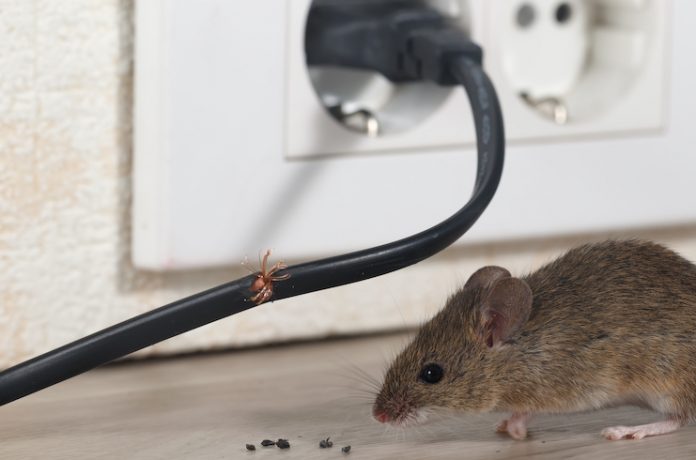
When staying in a hotel or lodging facility, guests come with the expectation that their room will be clean and pest-free. Due to the nature of the environment found inside lodging facilities, they are a beacon for rodents in search of food and shelter during the winter months. It is crucial for lodging facility managers to know the dangers pests pose to health and property, as well as the tell-tale signs of an infestation.
Rodents seek out lodging facilities during the winter when their regular food sources, like public trash cans or dumpsters, are less full and foot traffic decreases. Pests are a serious threat to the health of guests and employees because they can contaminate food and surfaces with their droppings and spread more than 35 diseases, including E. coli and salmonella. Rodents can also damage a facility by chewing through drywall, wood, and electrical wires.
To prevent an infestation, facility managers and their teams should know the signs of rodents in both guestrooms and common areas. These are the top six signs of an infestation:
- Droppings: Finding mice or rat droppings around a lodging facility is one of the most common signs of a rodent infestation. Pellets are often left behind in places where food is stored, such as commercial kitchens storage areas, as well as under sinks, inside chewed cardboard boxes, along baseboards, and on top of wall beams.
- Gnaw marks: Rodents can cause serious property damage by chewing through almost any type of material—including plastic and lead pipes—to obtain food or water. House mice and Norway rats are also known to gnaw on wires behind walls, sometimes causing fires.
- Nests: Rodents prefer to nest in dark, secluded areas where there is little chance of disturbance. House mice specifically like to build their nests out of shredded paper products, cotton, packing materials, wall insulation, and fabrics. If facility managers find these materials scattered around guestrooms or common areas, it might be a sign that rodents are near.
- Tracks or rub marks: Rats tend to leave dark grease or dirt marks along walls and floorboards as they follow a trail throughout the building between their nest and food sources. Facility managers should keep an eye out for these rub marks, which are actually caused by the rat’s oily fur.
- Strange noises: If guests are complaining about hearing strange noises in the walls, especially at night, chances are these sounds can be attributed to a family of rodents scurrying about the facility, between the walls, and up in attics. Rodents are especially fond of storage spaces because they provide dark, secluded spots to build nests.
- An actual rodent: Mice can breed rapidly, so if a facility manager or guest spots a mouse in the building, it’s likely there are others playing hide and seek. In fact, a female house mouse can give birth to a half dozen babies every three weeks, up to 35 young per year.
To prevent rodent infestations, facility managers should regularly inspect common areas and guestrooms for the signs listed above. They should also seal any structural cracks or crevices with caulk or steel wool because house mice can fit through openings as small as a dime. Be sure to keep kitchens, storage areas, and laundry rooms clutter free and eliminate any excess moisture around the facility. All food items should be stored in airtight containers and garbage should be disposed of regularly.
Most importantly, facility managers should maintain regularly scheduled inspections and treatments with their licensed pest control partner. A professional can implement an integrated pest management plan—a holistic and customized approach to pest control that is comprised of inspection, identification, and treatment to help ensure commercial facilities clean, compliant and pest-free. These inspections and treatments should continue year-round because rodents pose an ongoing threat to lodging facilities.
About the Author
Cindy Mannes is senior vice president of public affairs at the National Pest Management Association.











